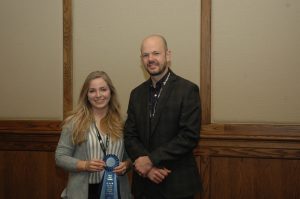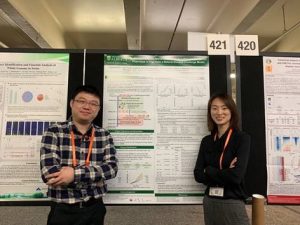By Mikolaj Raszek, PhD
The lead-up
After finishing my PhD in Biochemistry, I took a break from science to think about what I wanted to do with my life and my degree. Eventually, I figured out that I wanted to start a business that provided access to DNA testing to those in need or who were curious to learn about their potential predispositions. Having made that decision, I needed an opportunity to surround myself in the study of DNA and genomics, to firm up my background and get some hands-on experience. This is exactly what happened at Livestock Gentec, one of my very favourite career opportunities. I still have fond memories of my colleagues there and the quality of the research.

By the time I arrived, I knew a bit about human genomics and the technologies used to delve into genetic data—but nothing about cattle. Lab work was no problem. I was surrounded by so many talented people that learning was easy. We studied gene expression differences of healthy cattle versus those impacted by bovine respiratory diseases. As a process of validation, we worked with RT-qPCR using cattle RNA with one of the best in-line instruments at the time: this type of assay that is now used to identify SARS-CoV-2 coronavirus in human samples. Calibrating the instruments is no easy feat so, now that these assays are run in millions around the world to test for SARS-CoV-2, I can tell you that some highly sophisticated efforts are being made to identify infected people.
But getting up to speed on the general background on cattle genetic research…? That took many hours and many journal articles. I pitched to Graham Plastow, Gentec CEO, that I should write a review of my information blitz, which led to an interesting niche topic for Leluo Guan and me: use of genomic technologies to study infectious agents in cattle. I loved that project precisely because it gave me the opportunity to learn from my bosses how to think outside the box when researching information. This was also my first foray into the serious study of viruses and their genetics, which quite fascinated me. I even proposed a project to study the cattle virome, but this was not even an emerging field at the time.
Eventually, Merogenomics was born, a company dedicated to building a catalogue of medically-relevant DNA sequencing services for clinics interested in setting up in this niche territory, and end-users who need such services. It has been a labour of love, fired by passion.
The redirect
The outbreak of the COVID-19 pandemic brought the company to a standstill. From the start, I suspected that we were witnessing an event not to be dismissed. My interest in viral genetics, born at Livestock Gentec, was reignited, and I have been deep in SARS-CoV-2 scientific literature.
To continue Merogenomics’s mission to help those in need, I’ve published blog posts on SARS-CoV-2. The first was on the origins of the virus itself and what science had to say about it, as this was hot topic from the start, only grabbing more media attention as the pandemic ballooned and people sought answers. In the second article, I switched from the genome of the virus to our own genetic predisposition. The third article was dedicated to current research into drugs, and the fourth on building immunity and vaccination. (This pattern matched that of the Gentec review. Apparently, those lessons stuck hard!)
The way forward
All this seemingly unconnected knowledge came together in February 2020 when I became a member of a multi disciplinary and multi-organization team dedicated to developing a new detection system for SARS-CoV-2 for rapid population screening. The team comprises many PhDs but most of them don’t have a molecular sciences background, opening the door for me be a valuable source of knowledge. Once again, I am in totally over my head—and I love it. Once again, I’ve had to learn at a blistering pace. I meet many business people, researchers and even physicians working directly with hospitalized patients in some of the most afflicted areas of the world.
Never did I imagine that learning about cattle viruses would one day lend itself to trying to fight a human pandemic.


